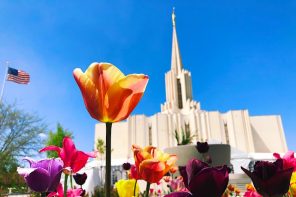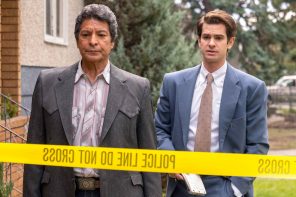Andrew Sullivan is right to point out that there is a tremendous double standard at play in the fact that President Obama’s relationship to Jeremiah Wright has been made the subject of a long-lasting national controversy while Governor Romney’s relationship to racist statements by past LDS leaders has been quietly accepted.
(In fact, it may be the case that during 2012 general presidential campaign, Obama has been the object of more religion-related public antagonism and mischaracterization than Romney—including the persistence of charges that Obama is Muslim, not a Christian, as he has professed.)
But Sullivan has a few of his facts about Mormon history and doctrine wrong.
He is wrong to say that LDS priesthood segregation was based in Book of Mormon scripture. In fact, African-American men were ordained to the LDS priesthood during Joseph Smith’s lifetime, and the Book of Mormon openly opposes anti-black racism, in 2 Nephi 26: 33:
God inviteth them all to come unto him and partake of his goodness; and he denieth none that come unto him, black and white, bond and free, male and female; and he remembereth the heathen; and all are alike unto God, both Jew and Gentile.
Sullivan is wrong to cite the Book of Mormon scripture from 2 Nephi 5: 21 (which connects a “cursing” due to “inquity” to a “skin of blackness”) as a pretext for the anti-black segregation of the LDS priesthood and temple worship. This scripture has never been used in LDS contexts as a rationale for the ban. It refers to Book of Mormon people called the “Lamanites,” believed by orthodox Mormons to be the ancestors of indigenous North and South Americans. Native Americans and Latinos have never been excluded from the LDS priesthood.
Sullivan is also wrong to suggest that Brigham Young instituted the priesthood ban based on his reading of the Book of Mormon. LDS historians are still divided on how the ban originated, but certainly Young’s own racism—first fully on record in a speech to the Utah Territorial government in 1852—contributed to the end of black ordinations within the LDS Church. And Young’s racism was always based in biblical narratives of Cain and Ham, as was the racism of many other nineteenth-century white Christians.
After the death of Brigham Young, LDS Church leaders debated the origins and rationale behind anti-black priesthood and temple segregation—but they did not dispute the policy itself. The matter seemed to be settled when the First Presidency of the Church declared in 1947 that (despite historical precedent) “From the days of the Prophet Joseph until now, it has been the doctrine of the Church, never questioned by any of the Church leaders, that the Negroes are not entitled to the full blessings of the Gospel.” (The best history on the priesthood ban is here.)
Sullivan is right that Church leaders have never apologized directly for the ban. As a religion that has grown up “on camera,” as it were, with all of its historical missteps plainly documented in modern American history, the LDS Church has developed a culture of saving face by quietly leaving behind controversial problems rather than subjecting them to full and searching investigation or debate.
Earlier this year, when the Washington Post quoted a BYU religion professor defending the ban on racist grounds, the LDS Church offered the following statement:
The Church’s position is clear—we believe all people are God’s children and are equal in His eyes and in the Church. We do not tolerate racism in any form.
For a time in the Church there was a restriction on the priesthood for male members of African descent. It is not known precisely why, how, or when this restriction began in the Church but what is clear is that it ended decades ago. Some have attempted to explain the reason for this restriction but these attempts should be viewed as speculation and opinion, not doctrine. The Church is not bound by speculation or opinions given with limited understanding.
We condemn racism, including any and all past racism by individuals both inside and outside the Church.
This statement was welcomed by Church members as a denunciation of past racism. But it does not denounce the ban as racist from its origins, opting instead to leave those origins quietly behind. Consequently, the statement has unwittingly provided cover for some Mormons who wish to continue to assert that the racist segregation of the priesthood and LDS temple ceremonies were divinely intended.
Romney’s own refusal to say that he believes the priesthood ban was wrong—in those simple words—is not unique to Romney. Many Mormons today are still not comfortable saying “we were wrong.” This is reflective of a deeply traditional LDS reverence for Church authority, a historically-rooted guardedness against criticism by non-Mormon outsiders, and, for some, a belief in prophetic infallibility. Other Mormons are comfortable saying “we were wrong” but did not and do not leave the faith; they deeply identify with it, even as they acknowledge the fallibility of past leaders, and view the LDS Church as being in a process of continuing evolution that members can witness and quietly foster—even when change is painfully slow. (This group includes George Romney and Mormon historians who helped document the human rather than inspired origins of the ban in the 1970s.) Still others choose to leave the faith altogether over matters of conscience.
Romney’s attitudes on the priesthood ban are reflective of Romney’s own deeply embedded sense of loyalty to hierarchy and identification with institutional power. We see it at work in his political and corporate careers. As I have argued many times before, Romney stays true to the powers that be. He does not, as the Quakers put it, “speak truth to power.”




